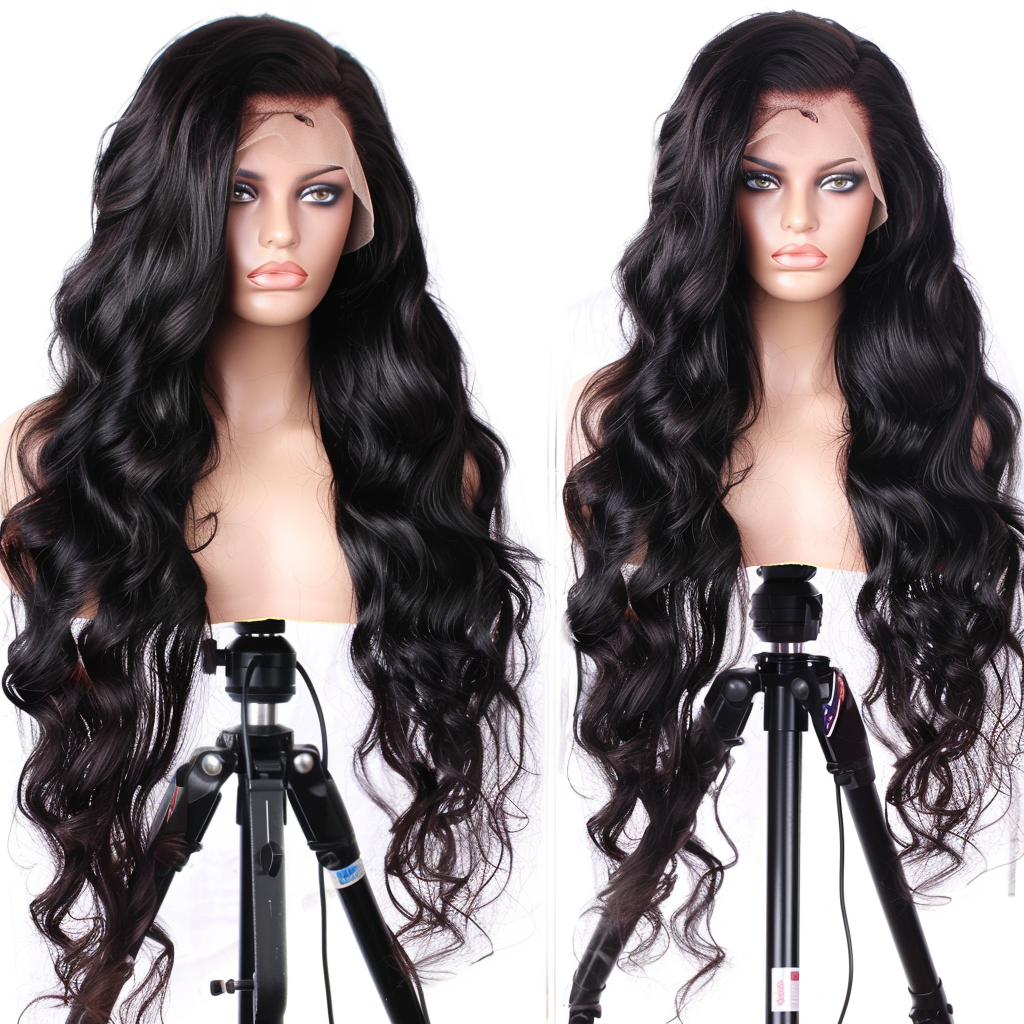Imagine stepping into the glamorous world of wigs, with their capability to transform your look in an instant. Whether it\’s for a special occasion or a creative endeavor, wig glue is the secret weapon that holds it all together. However, navigating the realm of wig glue can be tricky, and even the smallest oversight can lead to disastrous results. In this article, we will explore the most common mistakes to avoid when using wig glue, equipping you with the knowledge to achieve a flawless and long-lasting bond between you and your fabulous hairpiece. From application techniques to maintenance, get ready to unlock the secrets of wig glue and elevate your wig-wearing game to new heights.
Choosing the Wrong Type of Wig Glue

Wig glues come in different formulas, and choosing the right type is crucial for a secure and comfortable wig application. Understanding the different types of wig glues can save you from potential disasters. Some wig glues are formulated for lace front wigs, while others are designed for full lace wigs. Lace front wig glue typically has a strong hold and dries clear, blending seamlessly with the lace. On the other hand, full lace wig glue is more flexible and can withstand extreme movements without compromising the bond. Consider your hair and scalp type when choosing wig glue. If you have sensitive skin or are prone to allergies, opt for a hypoallergenic glue that is gentle on your scalp. For oily scalps, look for a wig glue that offers oil control to prevent slipping. Taking into account your needs and preferences will ensure a successful wig glue selection.
Applying Too Much or Too Little Wig Glue
Finding the perfect balance when applying wig glue is key to achieving a secure hold without going overboard or ending up with insufficient adhesion. Applying too much glue can lead to messy hairlines and uncomfortable buildup. Conversely, applying too little glue can result in a wig that slips and slides throughout the day. It is important to follow the manufacturer\’s instructions and guidelines for the recommended amount of wig glue to use. This will vary depending on the type of wig glue and your desired hold. Experimenting and finding the right amount of glue that provides a secure hold while still allowing for natural movement is crucial for a flawless wig application.
Neglecting Patch Testing and Allergies
Patch testing for wig glue is essential to avoid potential allergic reactions. Even if you have used wig glue in the past without any issues, it is still important to perform a patch test before applying it to your scalp. To perform a patch test, apply a small amount of the wig glue to a discreet area of your skin, such as behind your ear, and wait for at least 24 hours. If any redness, itching, or irritation occurs, it is a sign of an allergic reaction, and you should avoid using that particular glue. If you experience any allergic symptoms after applying wig glue, such as swelling or difficulty breathing, seek immediate medical help. Allergies can range from mild to severe, and it is crucial to address them promptly to prevent any complications.
Improper Scalp Preparation
Preparing your scalp properly before applying wig glue can make a significant difference in the longevity and adhesion of your wig. Start by cleansing your scalp thoroughly to remove any dirt, oil, or residue that may hinder the bonding process. Use a gentle shampoo and rinse thoroughly to ensure a clean surface. Exfoliating your scalp can improve the adhesion of the wig glue. By removing dead skin cells and promoting blood circulation, you create a smoother surface for the glue to bond with. Gently massage your scalp with a soft bristle brush or exfoliating glove to exfoliate and stimulate the skin. Avoid applying wig glue to an oily or dirty scalp, as this can weaken the bond and lead to premature wig detachment. Take the time to properly cleanse and exfoliate your scalp before applying the wig glue to ensure optimal adhesion and longevity.

Incorrect Application Technique
Properly applying wig glue requires attention to detail and the use of the right tools and techniques. Ensure that you have a firm grasp on the wig placement to avoid any slippage during application. Using a wig brush or comb, gently push back your natural hair to create a smooth surface for the wig to adhere to. Apply a thin layer of wig glue along the hairline, being careful to avoid getting it on your natural hair. When placing the wig, start from the front and gradually work your way towards the back, gently pressing the lace or base onto the glued area. Using a dry towel or wig cap, firmly press down on the glued sections to secure the bond. Avoid tugging or pulling on the wig, as this can loosen the glue and compromise the adhesion. Taking your time and using precise techniques will ensure a seamless wig application that stays in place throughout the day.
Not Allowing Sufficient Drying Time
Allowing wig glue to dry properly is crucial for a secure and long-lasting hold. Rushing the drying process can result in premature wig attachment, leading to a weak bond and potential wig slippage. Understanding the importance of drying time is essential. Many wig glues require a specific amount of time to reach optimal tackiness before attaching the wig. This tackiness helps create a strong bond between the glue and the wig. Follow the manufacturer\’s instructions for drying time and avoid attaching the wig before the glue has had sufficient time to dry. Waiting patiently will ensure that you achieve the best possible bond and minimize the risk of wig movement or detachment.
Using Expired or Low-Quality Wig Glue
Using expired or low-quality wig glue can have detrimental effects on the longevity and quality of your wig application. Before purchasing a wig glue, check the expiry date and shelf life to ensure that you are using a fresh product. Investing in high-quality wig glue is essential for a secure and long-lasting hold. Cheap or counterfeit products may not adhere properly or contain harmful ingredients that can damage both your hair and scalp. Research reputable brands and read reviews to find a wig glue that is reliable and trusted by other wig wearers. By choosing high-quality wig glue, you can ensure that your wig stays in place and looks flawless for an extended period, without any compromise to your hair or scalp health.
Glue less T-Part Wig From WowEbony
Poor Wig Maintenance and Removal
Taking proper care of your wig is essential for preserving its lifespan and maintaining a natural appearance. Regular cleaning and care routines will prevent buildup of dirt, oils, and products that can weaken the bond of the wig glue. Follow the manufacturer\’s instructions for cleaning your wig and use gentle, wig-specific shampoos and conditioners to avoid stripping the hair fibers or damaging the wig cap. Allow your wig to air dry naturally or use a wig stand to maintain its shape during the drying process. When it comes time to remove the wig, do so with care to avoid damaging your natural hair or scalp. Gently lift the wig from the back, working towards the front, using a wig adhesive remover if necessary. Avoid using harsh chemicals or techniques that can cause breakage or irritation. Proper cleaning and removal techniques will ensure that your wig remains in great condition, ready for your next wear.

Ignoring Personal Comfort and Convenience
While achieving a secure hold is a top priority when using wig glue, personal comfort and convenience should not be overlooked. Consider your own comfort when selecting a wig glue. Prioritize comfortable wig application by choosing a formula that does not cause any itching, burning, or discomfort on your scalp. Look for glues that offer a suitable hold time for your needs. Some may prefer a stronger hold that lasts all day, while others may prefer a more flexible hold that allows for easy removal. By considering your comfort and convenience, you can make the wig-wearing experience much more enjoyable.
Neglecting Professional Advice and Assistance
If you are new to using wig glue or experiencing difficulties, do not hesitate to seek professional advice and assistance. Consulting with a wig specialist or stylist can provide valuable insights and guidance, especially when it comes to troubleshooting any issues you may encounter. A professional can assess your specific hair and scalp concerns and recommend the best wig glue and application techniques for your needs. They can also provide tips and tricks for improving your wig-wearing experience and answer any questions you may have. Don\’t be afraid to seek help when needed, as it can make a significant difference in the comfort and success of your wig application.
By avoiding these common mistakes when using wig glue, you can achieve a flawless and long-lasting wig application. Taking the time to choose the right type of wig glue, applying it properly, and caring for your wig will ensure a comfortable and natural look. Remember to prioritize your personal comfort and seek professional advice when needed. With these tips, you can confidently embrace the world of wig wearing and enjoy the versatility and beauty that wigs can offer.

